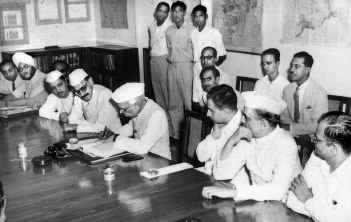
First 5 Yr Plan
Prime Minister Jawaharlal Nehru presented the first five-year plan on July 9 1951. The total planned budget of Rs 2069 crore was allocated to seven broad areas, irrigation and energy, agriculture and community development and transport and communications got the highest allocation.

Towards Socialism
The Avadi Session, 1955 represented the Congress's distinct shift towards socialism. The Congress declared the socialist pattern of society to be its goal. The party resolution also stated that planning must take place with a view towards the establishment of such a society.

Panchsheel Agreement
The 8-year Panchsheel treaty was signed between India and China on 29 April 1954. The agreement focused on the disputed territories of Aksai Chin and South Tibet and recognised the principles of mutual respect by both countries of each others's territorial integrity and sovereignty, mutual non-aggression, mutual non-interference in each other's internal affairs and peaceful co-existence.
Hyderabad Session, 1953
It was only five years back that the princely state of Hyderabad had been integrated into India. However, the Hyderabad session will be remembered for Pandit Nehru’s stirring address on world peace. “Peace is not merely the absence of war. It is also a state of mind,” he said.

Congress Wins First Election After Independence
The Congress party garnered an overwhelming majority, winning 364 out of 489 seats in India's first general election. On May 13, 1952, the first elected government of free India was formed under the newly adopted Constitution, with Pandit Jawahar Lal Nehru as the Prime Minister and 14 other members forming part of the cabinet.

Ambedkar Resigns
On October 11, 1951, Dr B.R. Amedkar, the Law Minister until then, left office after his resignation from the Government on September 27, 1951, after the Hindu Code Bill was dropped by the Cabinet.

Sardar Patel passed away
Sardar Vallabhbhai Patel, the 75 year old Bismark of India, who was one of the foremost architects of India's freedom and its consolidation, passed away.

IIT Kharagpur
On August 18, 1950, Maulana Abul Kalam Azad, India's Education Minister, opened the first Indian Institute of Technology (IIT) at Kharagpur. Besides paving the way for many more IITs to be set up in the future, this sowed the seeds for India's future technological prowress.

Constitution of India
The Constituent Assembly, on behalf of the people of India, adopted the Constitution of India, a document that made India into a sovereign democratic republic and shaped its future growth.

Cochin -Travancore Union Born
On July 1, 1949, Cochin and Travancore were merged by the Ministry of States and integrated into the Union to form the state of Travancore-Cochin or Thiru-Kochi.

Greater Rajasthan Union Inaugurated
On March 30, 1949, Sardar Patel, the Deputy Prime Minister of India, inaugurated the Greated Rajasthan Union, which brought together 19 princely states, 2 chiefships and the district of Ajmer-Merwara (22 regions).

Conference Against Dutch Aggression in Indonesia
On January 20, 1949, Prime Minister, Pandit Jawahar Lal Nehru inaugurated in New Delhi a Conference of 19 nations (18 Asian countries and Australia) Against Dutch Aggression in Indonesia. His inaugural address read, "If this challenge is not met effectively, then indeed, the consequences will affect not merely Indonesia, but Asia and the entire world."

Jaipur Session
Holding the first Congress Session after independence at Jaipur was of immense symbolic value. It represented the integration of erstwhile princely states like Jaipur into the Indian Union. The Jaipur Session saw the merger of all the political outfits in various principalities of the erstwhile principality following the Congress' agenda, with the Congress party.
Hyderabad Becomes Part of India
On September 17, 1948, the Nizam surrendered after the Indian military successfully marched into Hyderabad, the last Princely State to accede to the Indian Union
Damodar Valley Corp Created
The Damodar Valley Corporation was created on 7 July 1948 as the first multipurpose river valley project of independent India. The project has been transmitting power since 1953 and has contributed greatly to the development of Eastern India.

East Punjab States Union formed
On July 15, 1948, Sardar Patel, Minister for States, inaugurated the Union of Patiala and East Punjab States, consisting of the States of Patiala, Kapurthala, Nabha, Jind, Faridkot, Malerkotla, Kalsia and Nalagarh.

Deccan States Merge with Bombay
On February 20, the rulers of 15 Deccan states agreed to integrate their administration with that of the Province of Bombay and to confer full and exclusive powers and jurisdiction in relation to their states to the Government of India.

Matsya Union Formed
On 17 March 1948, the Matsya Union came into being with the integration of the states of Alwar, Bharatpur, Dholpur and Karauli.
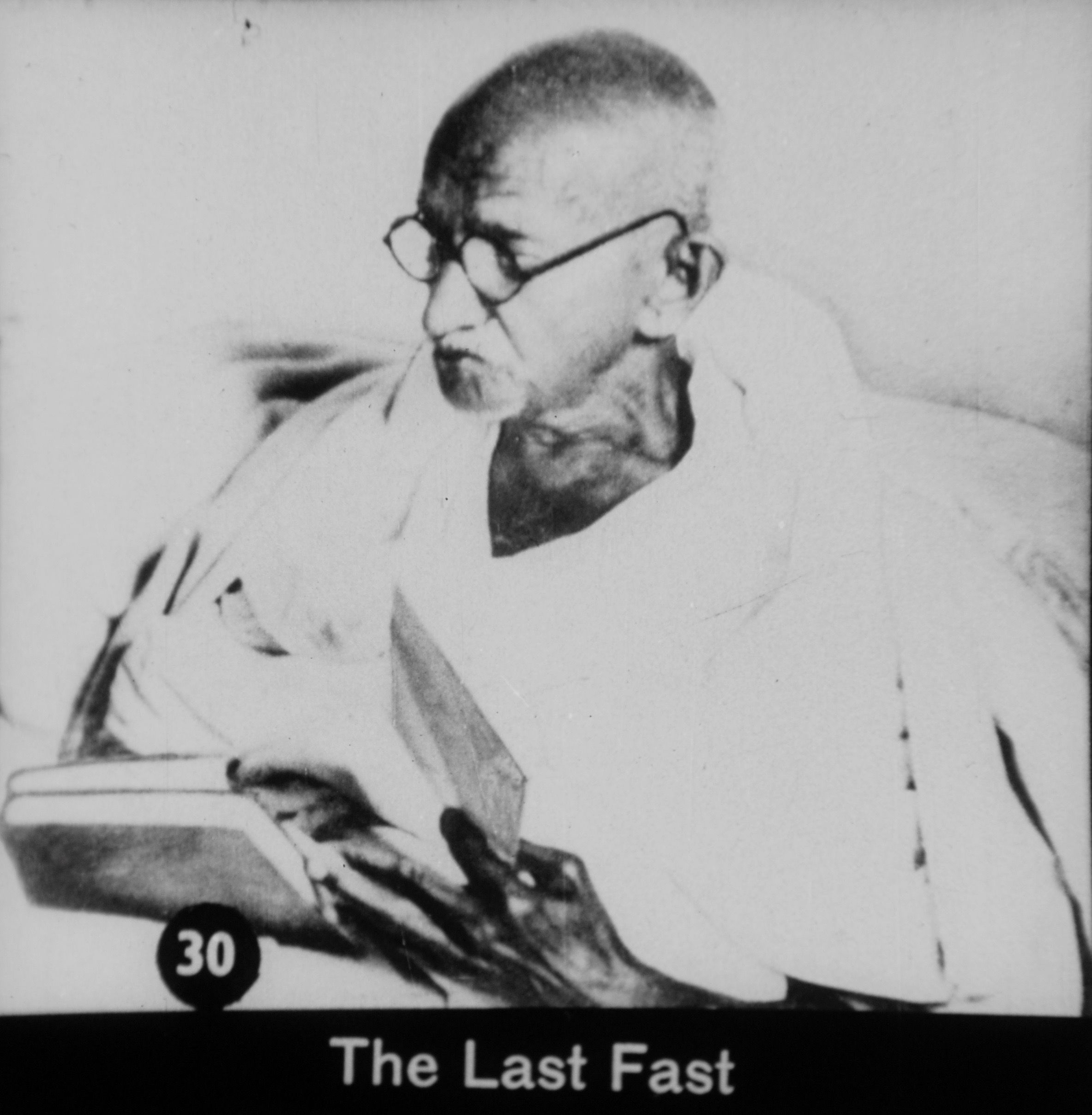
Gandhiji's Last Fast
Upset at the reports of communal violence and disharmony that he had been hearing since his arrival in Delhi a month after independence, Gandhiji began fasting for religious unity on January 13, 1948. He ended his fast on January 19, when a Peace Committee of 180 members from Hindu, Muslim, Sikh and other religious communities with Dr. Rajendra Prasad as its convenor, signed a pledge assuring him that such incidents would not happen again.

Martyrdom of Mahatma Gandhi
Mahatma Gandhi was assasinated by a religious fanatic Nathuram Godse on January 30, 1948 when he was on the way to a prayer meeting. Prime Minister Jawahar Lal Nehru stated: "The Light has gone out from our lives" as the nation plunged into mourning.

15 States Join Orrisa
On December 15, 1947, as result of the efforts of the States Ministry headed by Sardar Patel and assisted by V.P. Menon, 12 out of 15 class B and C class states agreed to sign an agreement with the Government of India whereby the administration of the states are to be taken over by the Government of Orissa. The merger of all 25 states except 1 became effective on January 1, 1948. On the next day, 10 A-class states also agreed to the same.

11 Chattisgarh states Join C.P. and Berar
On December 16, 1947, 11 Chattisgarh states agreed to join the Central Provinces (C.P.) and Berar with effect from January 1, 1948.

Junagadh Becomes Part of India
After the ruler, dewan and the executive council of Junagadh unanimously gave their approval and consent to the Instrument of Accession, the Indian Union took over the administration of the state. A small Indian military was despatched to Junagadh, which was given a resounding welcome by the local people.

J&K Accedes to the Indian Union
On October 26, 1947, Maharajah Hari Singh of Jammu and Kashmir, executed the Instrument of Accession to accede to the Dominion of India.

Drafting Committee of Constituent Assembly
On August 29, 1947, the Constituent Assembly constituted the Drafting Committee to formulate the provisions of a Constitution for India, with Dr. B.R. Ambedkar as its chairman.

Princely States join India
All but three of the 565 Princely States signed Instruments of Accession and Standstill agreements with the forthcoming Indian Union by August 14 1947. The three states which hadn't signed the Instruments of Accession by then were Junagadh, Hyderabad and Kashmir.
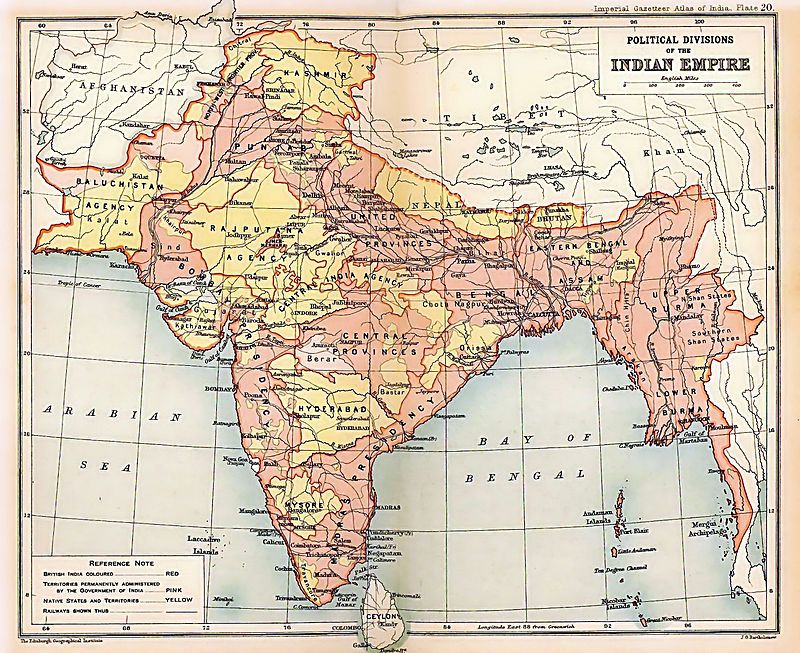
Indian Independence Act, 1947
On July 18, 1947, the Indian Independence Act, 1947 was passed by the British for partition and transfer of powers on the lines of the announcement made by Lord Mountbatten in June 1947
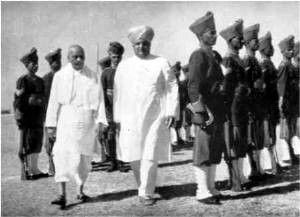
Inviting Princely States
On July 5, 1947, Sardar Patel invited Princely States to join the forthcoming Indian Union, by way of transferring their powers over Defence, Foreign Affairs and Communications in return for privy purses to the princes (as the scheme of the independence outlined by Lord Mountbatten left the Princely States free from having to join either India or Pakistan)

Decision on Partitioning India
June 3, 1947, Lord Mountbatten announced his plan to partition India to resolve the deadlock created by the refusal of the Muslim League to join the Constituent Assembly framed to form the constitution of India.

Asian Relations Conference
On March 23, 1947, Nehru hosted the Asian Relations Conference, chaired by Sarojini Naidu, to bring together the leading men and women of Asia on a common platform to study the problems of common concern to the people of the continent, to focus attention on social, economic and cultural problems of the different countries of Asia, and to foster mutual contact and understanding.

Constituent Assembly
The elections to the Constituent Assembly were held in July-August 1946. The first sitting of the assembly, chaired by Dr. Sachidananda Sinha, was held on December 9, 1946. However, members belonging to the Muslim League boycotted the meeting, as they were adamant on the creation of Pakistan.

Peace Mission in Bengal
On November 6, 1946 Gandhiji embarked upon his peace mission in Bengal to stop communal violence. By the time he completed the mission on March 2, 1947, he had covered 49 villages across the province that had been badly hit by communal strife.

Caretaker Govt constitued
After being invited by Lord Wavell on August 12, 1946, a caretaker government was formed on September 2 with Nehru as Vice-President of the Viceroy's Executive Council. The Muslim League was not part of the caretaker government as it withdrew its acceptance of the Cabinet Mission Plan.
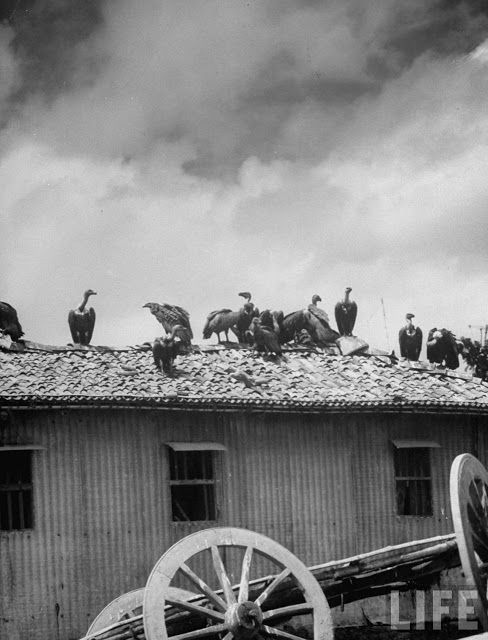
Direct Action Day
The Muslim League called for observance of Direct Action Day on August 16, 1946 for creation of a separate Pakistan. This triggered communal violence in Calcutta resulting in the death or injury of around 20,000 persons.

Congress Accepts Cabinet Mission
On July 7, the Congress agreed to the May 16 plan. On July 10, 1946, Nehru stated that the Congress would enter the Constituent Assembly completely unfettered by agreements and free to meet all situations as they arise' On July 29, 1946, the Muslim League, which had earlier approved the Mission's proposals, withdrew its support to the Plan and demanded the creation of Pakistan.

Second Provincial Government
New governments were formed at the provinces based on the election held in March, 1946. The Congress won absolute majority in Bombay, Madras, United Provinces, Bihar, Orissa and Central Provinces. In Punjab, a Coalition government comprising the Congress, Akalis and the Unionist Party was formed. The Muslim League secured a majority in Bengal and Sindh.

British Cabinet Mission
The British Cabinet Mission's May 16 plan recommended election of a constituent assembly and creation of a loose three-tier confederation of united India, with separate grouping of majority Hindu and Muslim provinces and with equal representation of such Hindu and Muslim groups at the Union level. Unable to create a consensus between the League and the Congress, the Cabinet Mission left India on June 29, 1946.







